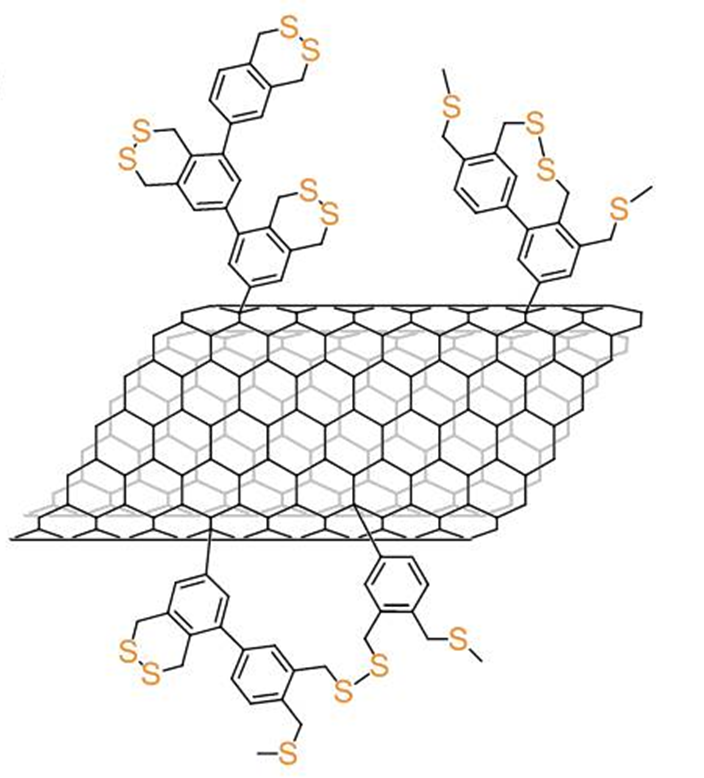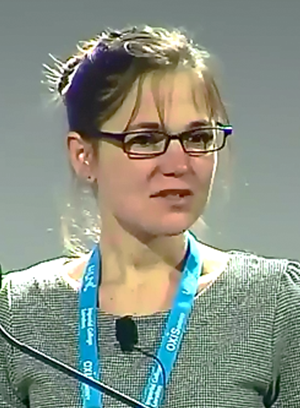20/12/2018 - Seminar by Prof. Anna Chrostowska (IPREM, Pau)
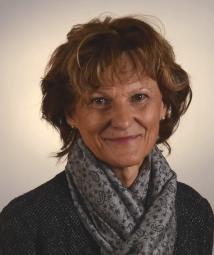 ► Prof. Anna Chrostowska, Institut des Sciences Analytiques et de Physicochimie pour l'Environnement et les Matériaux, UMR5254, Université de Pau & Pays Adour will give a seminar entitled « The synergy between theory and experiment in developing the basic science of new heteroaromatic systems » at 11 am on December 12, Room 26 building 127. (Contact: S. Campidelli).
► Prof. Anna Chrostowska, Institut des Sciences Analytiques et de Physicochimie pour l'Environnement et les Matériaux, UMR5254, Université de Pau & Pays Adour will give a seminar entitled « The synergy between theory and experiment in developing the basic science of new heteroaromatic systems » at 11 am on December 12, Room 26 building 127. (Contact: S. Campidelli).
Abstract: The problem that all chemists encounter more and more often concerns the choice of the most promising target molecule for a given set of specifications. The direct application of difficult, time-consuming, and expensive syntheses, without a deep prior analysis, is oftentimes not optimal. The constant back-and-forth dialectic between computations and experiments creates useful connections between theoretical knowledge and practical use of scientific achievements. This synergistic approach between high-level theory and experiment is now beeing applied more frequently to enhance our comprehension and conceptualization of new systems. Ultraviolet photoelectron spectroscopy (UV-PES) is a well-established technique to provide ionisation energies of molecules in gas phase. Also, Flash vacuum thermolysis (FVT) or vacuum gas solid reactions (VGSR) coupled with UV-PES proved to be especially suited to generate and analyse in real-time small amounts of short-lived species. These experimental data supported by quantum calculations for the consistency of the assignments of PE spectra provide fundamental information about electronic structure and bonding that is obtained by no other technique. Representative examples to illustrate the advantages and wide applicability will be exclusively chosen from our research, highlighting the synergy between computational electronic structure analysis and characterization by UV-photoelectron spectroscopy to develop a fundamental comprehension of physical and chemical properties of such emerging families of compounds.
27/11/2018 - Seminaire du Pr. Patrice Simon (Université Paul Sabatier, Toulouse)
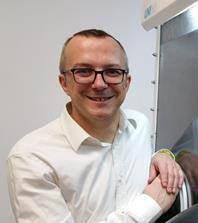 ► Pr. Patrice Simon (Université Paul Sabatier, Toulouse) donnera un sémiaire intitulé « Dynamique / adsorption des ions dans les milieux confinés : application au stockage électrochimique de l'énergie » le 27 Novembre à 11h, pièce 26 du Bât. 127. (Contact: G. Deniau).
► Pr. Patrice Simon (Université Paul Sabatier, Toulouse) donnera un sémiaire intitulé « Dynamique / adsorption des ions dans les milieux confinés : application au stockage électrochimique de l'énergie » le 27 Novembre à 11h, pièce 26 du Bât. 127. (Contact: G. Deniau).
Résumé: Complémentaires aux batteries, les supercondensateurs permettent de délivrer ou stocker de forts pics de puissance pendant plusieurs secondes. Ils stockent les charges par adsorption réversible des ions d’un l'électrolyte (sous courant électrique) à la surface de carbones poreux. Dans cet exposé, nous montrerons comment le contrôle de la structure poreuse de matériaux carbonés peut améliorer de façon drastique les performances électrochimiques par confinement des ions dans des pores nanométriques. L’utilisation de techniques électrochimiques classiques et avancées (micro-balance à quartz par exemple) avec la RMN ou la modélisation a permis de proposer un mécanisme expliquant l'augmentation de capacité observée dans ces pores nanométriques. D’un point de vue fondamental, ces travaux mettent en lumière la complexité du mécanisme de charge de la double couche électrochimique dans les milieux confinés. Ils permettent également d’envisager la réalisation de supercondensateurs de grande densité d’énergie, élargissant ainsi leur champ d’application.
15/11/2018 - Thèse d'Olivier Henrotte
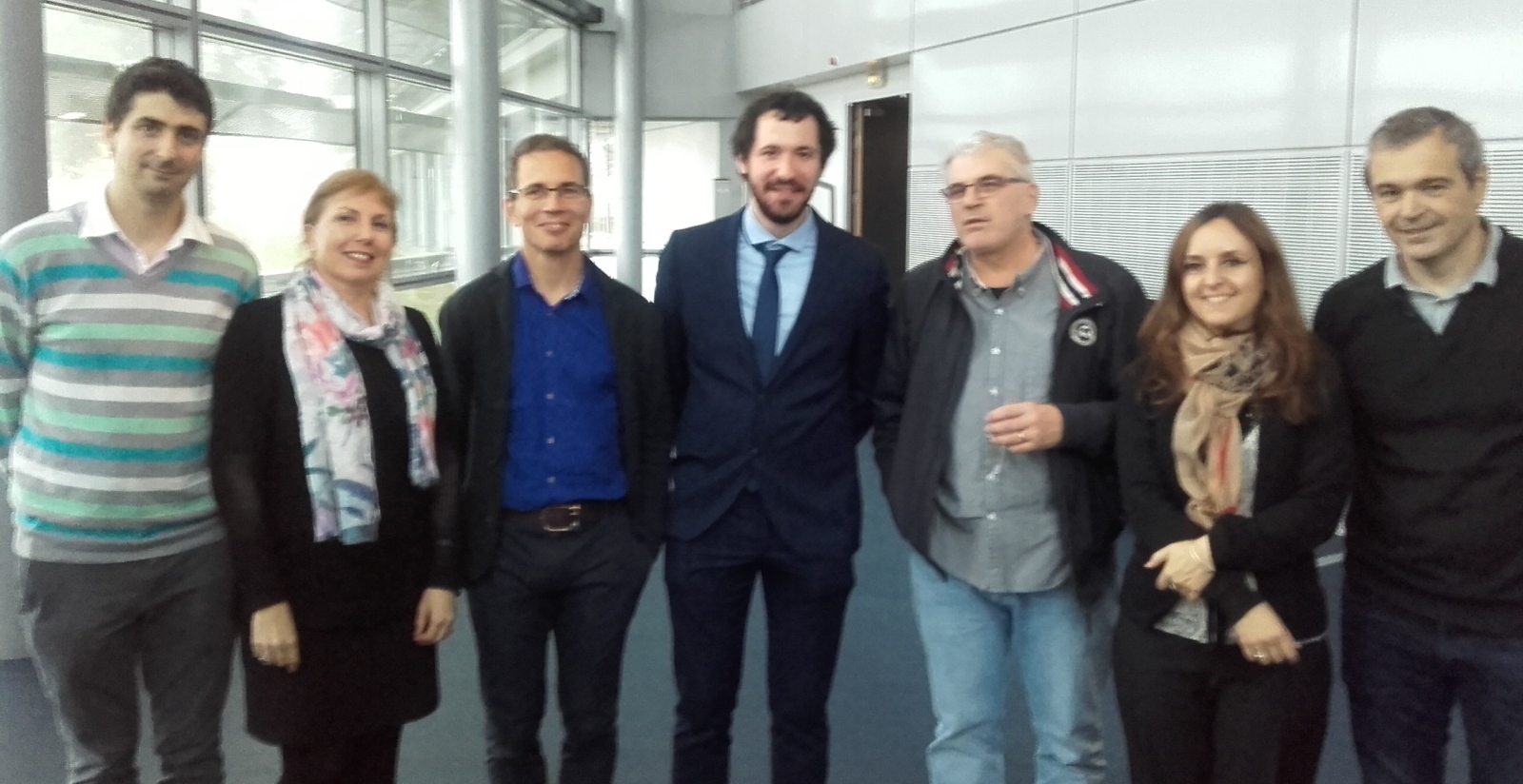 La soutenance d'Olivier Henrotte « Méthode pour l’analyse de l’activité de la réduction de l’oxygène de catalyseurs sans métaux nobles par microscopie électrochimique » a eu lieu le 5 novembre 2018 à 13h30 à l'amphi Talairach du bâtiment Neurospin (CEA Paris-Saclay). (Contact: B. Jousselme, R. Cornut).
La soutenance d'Olivier Henrotte « Méthode pour l’analyse de l’activité de la réduction de l’oxygène de catalyseurs sans métaux nobles par microscopie électrochimique » a eu lieu le 5 novembre 2018 à 13h30 à l'amphi Talairach du bâtiment Neurospin (CEA Paris-Saclay). (Contact: B. Jousselme, R. Cornut).
Résumé : La synthèse de catalyseurs sans métaux nobles est une voie prometteuse pour rendre accessible à l’échelle mondiale les piles à combustible. L’analyse électrochimique de ces matériaux n’est pas aisée que ce soit pour comparer les propriétés électrocatalytiques ou pour comprendre le fonctionnement de ces catalyseurs. Ceci provient du fait que la communauté scientifique évalue les performances catalytiques à l’échelle du matériau, donc sur un très grand nombre d’objets dont la réponse est moyennée. Les travaux présentés dans ce mémoire ont mis en place une méthode d’analyse de l’activité électrocatalytique de matériaux sans métaux nobles pour la réduction de l’oxygène en milieu acide par microscopie électrochimique à balayage. Cette approche permet d’étudier aussi bien macroscopiquement que microscopiquement les catalyseurs et d’étudier simultanément plusieurs catalyseurs, ce qui rend plus fiable la comparaison des résultats. Le dispositif présenté dans ce travail a permis de comparer différents catalyseurs avec des compositions proches ainsi que d’étudier l’influence de différents paramètres sur un catalyseur : le chargement, la surface, la masse déposée et la quantité de Nafion ajoutée. Il a aussi été montré qu’il était possible d’étudier la stabilité des catalyseurs via ce dispositif. Ces différents résultats suggèrent que la méthode mise en place est polyvalente et permettra de nombreuses autres études.
24/10/2018 - Next Seminar by Prof. Massimo GURIOLI (Department of Physics and Astronomy, University of Florence)
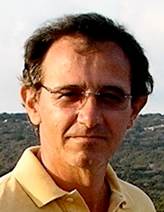
► Prof. Massimo GURIOLI from University of Florence and LENS will give a seminar entitled « Optics at the nanoscale: exploitation and imaging » at 11 am on October 24, Room 26 building 127. (Contact: A. Filoramo).
Abstract: The tremendous progress in nanophotonics towards efficient quantum emitters at the nanoscale requires investigation tools able to access the detailed features of the electromagnetic field with deep-subwavelength spatial resolution. This scenario has motivated the development of different nanoscale photonic imaging techniques. Among them superresolution (awarded by Nobel Prize), which, however, is not a near field method. In this talk, we will discuss in detail the difference between superresolution and scanning near field optical microscopy. Then we will overview the possibility in using near field microscopy for optical imaging and engineering at the nanoscale both in semiconductor nanostructures and photonics nano-resonators.
08/10/2018 - Thèse de Julien Lavie
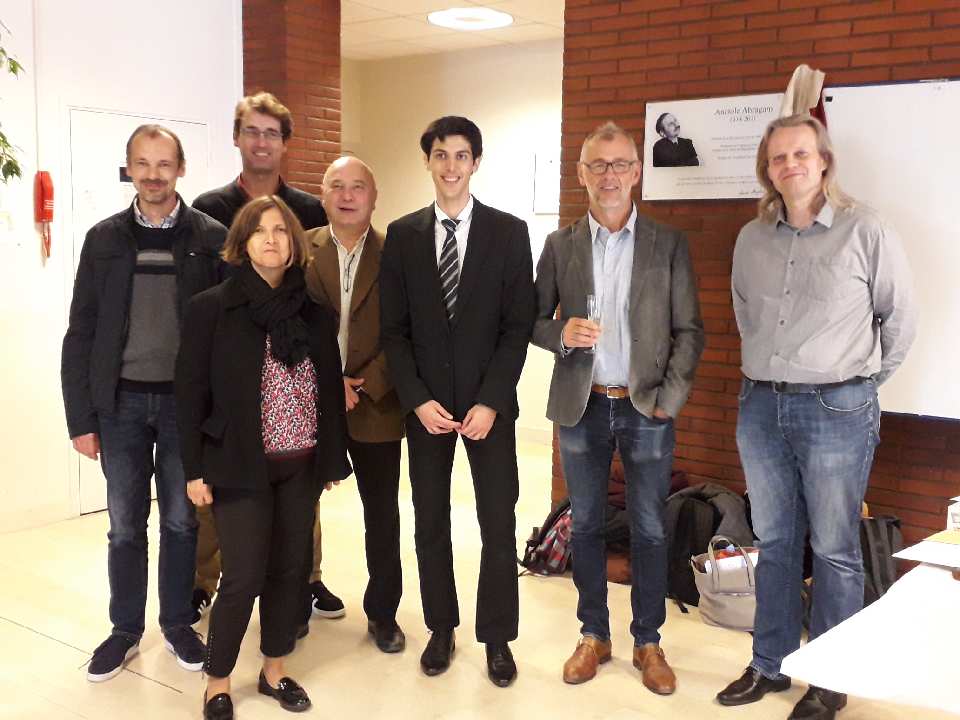 La soutenance de thèse de Julien LAVIE « Synthèse et propriétés des boites quantiques et nanomeshes de graphène » aura lieu le Lundi 8 octobre 2018 à 14h à l'amphi Bloch (CEA Paris-Saclay). (Contact: S. Campidelli).
La soutenance de thèse de Julien LAVIE « Synthèse et propriétés des boites quantiques et nanomeshes de graphène » aura lieu le Lundi 8 octobre 2018 à 14h à l'amphi Bloch (CEA Paris-Saclay). (Contact: S. Campidelli).
Synthesis and properties of graphene quantum dots and nanomeshes: The manipulation of the electronic properties of graphene, and in particular the bandgap opening by nano-patterning, is a crucial issue for both physics and applications. The nanostructuration can be done either through the top-down approach or the bottom-up approach. This bottom-up approach allows controlling at the atomic level the structure of the materials. The aim of this thesis is to prepare graphene quantum dots and graphene nanomeshes (regular arrays of holes in a graphene sheet) by chemical synthesis, and to study their physical properties. In the first part, a “family” of graphene quantum dots was prepared with organic chemistry via Diels-Alder and Scholl reactions and the optical properties were studied both in solution and at the single molecule scale. In the second part, a new type of graphenic structures intermediate between quantum dots and nanoribbons were synthesized and we named them “graphene nanorods”. These objects are one dimensional but have a controlled length compared to nanoribbons prepared via polymerization. Finally, various precursors were synthesized to create graphene nanomeshes. These precursors will allow the formation, using chemical vapor deposition in a scanning tunneling microscope chamber, of nanomeshes exhibiting different structures and morphology.
27/08/2018 - Single photon emission from graphene quantum dots at room temperature
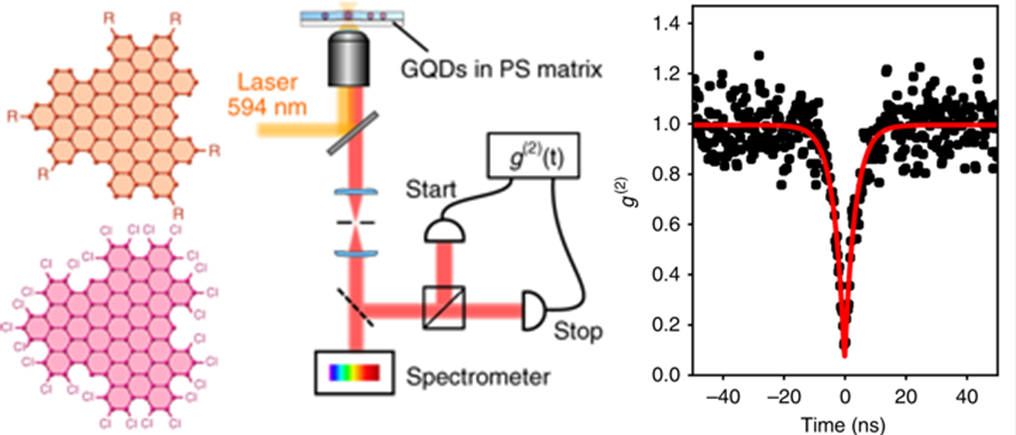 Nature Communications 9, 3470 (2018).
Nature Communications 9, 3470 (2018).
The latest results of a collaboration between researchers at Laboratoire Aimé Cotton, CEA Licsen, Laboratoire Pierre Aigrain and the Max Planck Institute for Polymer Research have just been published:
Single photon emission from graphene quantum dots at room temperature : Graphene being a zero-gap material, considerable efforts have been made to develop semiconductors whose structure is compatible with its hexagonal lattice. Size reduction is a promising way to achieve this objective. The reduction of both dimensions of graphene leads to graphene quantum dots. Here, we report on a single-emitter study that directly addresses the intrinsic emission properties of graphene quantum dots. In particular, we show that they are efficient and stable single-photon emitters at room temperature and that their emission wavelength can be modified through the functionalization of their edges. Finally, the investigation of the intersystem crossing shows that the short triplet lifetime and the low crossing yield are in agreement with the high brightness of these quantum emitters. These results represent a step-forward in performing chemistry engineering for the design of quantum emitters. (Contact Licsen: Stéphane Campidelli).
31/07/2018 - Fait Marquant : Spectroscopie de fluorescence femtoseconde d'un nouveau colorant "Push-Pull"
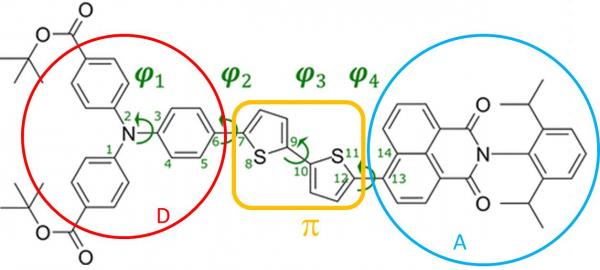
Les nouveaux résultats issus de la collaboration entre deux équipes de l'IRAMIS: LIDYL/DICO et NIMBE/LICSEN viennent de donner lieu à la parution:
- d'un nouvel article : Femtosecond fluorescence upconversion study of a naphthalimide–bithiophene–triphenylamine push–pull dye in solution, V. Maffeis, R. Brisse, V. Labet, B. Jousselme, T. Gustavsson, Journal of Physical Chemistry A 2018, 122, p5533.
- d'un nouveau Fait Marquant à retrouver dans son integralité ici: Étude par spectroscopie de fluorescence femtoseconde d'un nouveau colorant "Push-Pull" actif pour la conversion de l'énergie solaire
19/06/2018 - Fait Marquant : Des nanotubes fonctionnalisés pour augmenter la capacité et la stabilité des batteries Li-soufre (Li-S)
|
|
Les nouveaux résultats issus de la collaboration LICSEN / LITEN sur les batteries lithium-soufre viennent de donner lieu à la parution: - d'un nouvel article : Sulfur‐Containing Molecules Grafted on Carbon Nanotubes as Highly Cyclable Cathodes for Lithium/Organic Batteries, Gaëlle Charrier, Hanine Kamaleddine, Céline Barchasz, Renaud Cornut, Bruno Jousselme, Stephane Campidelli, ChemElectroChem 5, pp.1732-1737(2018). - d'un nouveau Fait Marquant à retrouver dans son integralité ici: Des nanotubes fonctionnalisés pour augmenter la capacité et la stabilité des batteries Li-soufre (Li-S) |
14/03/2018 - Séminaire de Céline Barchasz, CEA-Grenoble LITEN
|
|
Céline Barchasz (CEA-LITEN) donnera un séminaire le mercredi 14 mars à 11h (Bât 127) sur le thème: "Recent developments at CEA-LITEN on lithium/sulfur batteries" Firstly reported in the 80’s, rechargeable lithium-sulfur (Li/S) batteries have received ever-increasing attention since 10 years. Indeed, elemental sulfur (S8) is a promising positive electrode material due to its high theoretical specific capacity of 1675 mAh.g-1, much greater than the 100-250 mAh.g-1 achievable with the conventional lithium-ion positive electrode materials [1]. Assuming full conversion of S8 to Li2S, theoretical gravimetric and volumetric energy density values of 2600 Wh.kg-1 and 2800 Wh.l-1 can be obtained. In practical, complete Li/S cells are expected to reach gravimetric energy densities from 300 up to 600 Wh.kg-1. Those values, combined with low cost, non-toxicity and environmentally abundance of sulfur, make Li/S batteries one of the most promising candidates for next-generation energy storage systems [2]. This technology has attracted attention of the electrochemistry community for many years. However, several limitations still exist, which are mainly correlated to the non-conventional discharge mechanism of Li/S cell, not based on conventional intercalation reactions but on dissolution/precipitation phenomena. In this presentation, a review of the recent developments done at CEA-LITEN on lithium batteries and more precisely on lithium/sulfur system will be presented. [1] B.L. Ellis, K.T. Lee, L.F. Nazar, Chem. Mater. 22 (2010) 691-714; [2] R.D. Rauh, K.M. Abraham, G.F. Pearson, J.K. Surprenant, S.B. Brummer, J. Electrochem. Soc. 126 (1979) 523 |
09/02/2018 - Séminaire de Joan Teyssandier, Université de Louvain (Belgique)

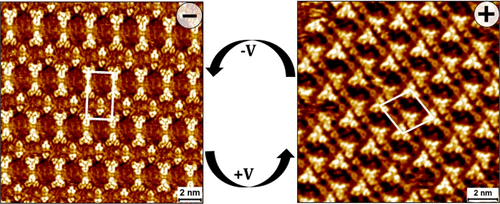 ► Joan Teyssandier (Université de Louvain, Belgique) donnera un sémiaire le vendredi 9 février à 11h (Bât 127) sur le thème: « Fonctionnalisation du graphène pour une modification contrôlée de ses propriétés » . (Contact: S. Campidelli).
► Joan Teyssandier (Université de Louvain, Belgique) donnera un sémiaire le vendredi 9 février à 11h (Bât 127) sur le thème: « Fonctionnalisation du graphène pour une modification contrôlée de ses propriétés » . (Contact: S. Campidelli).
01/02/2018 - Thèse Geoffrey Barral


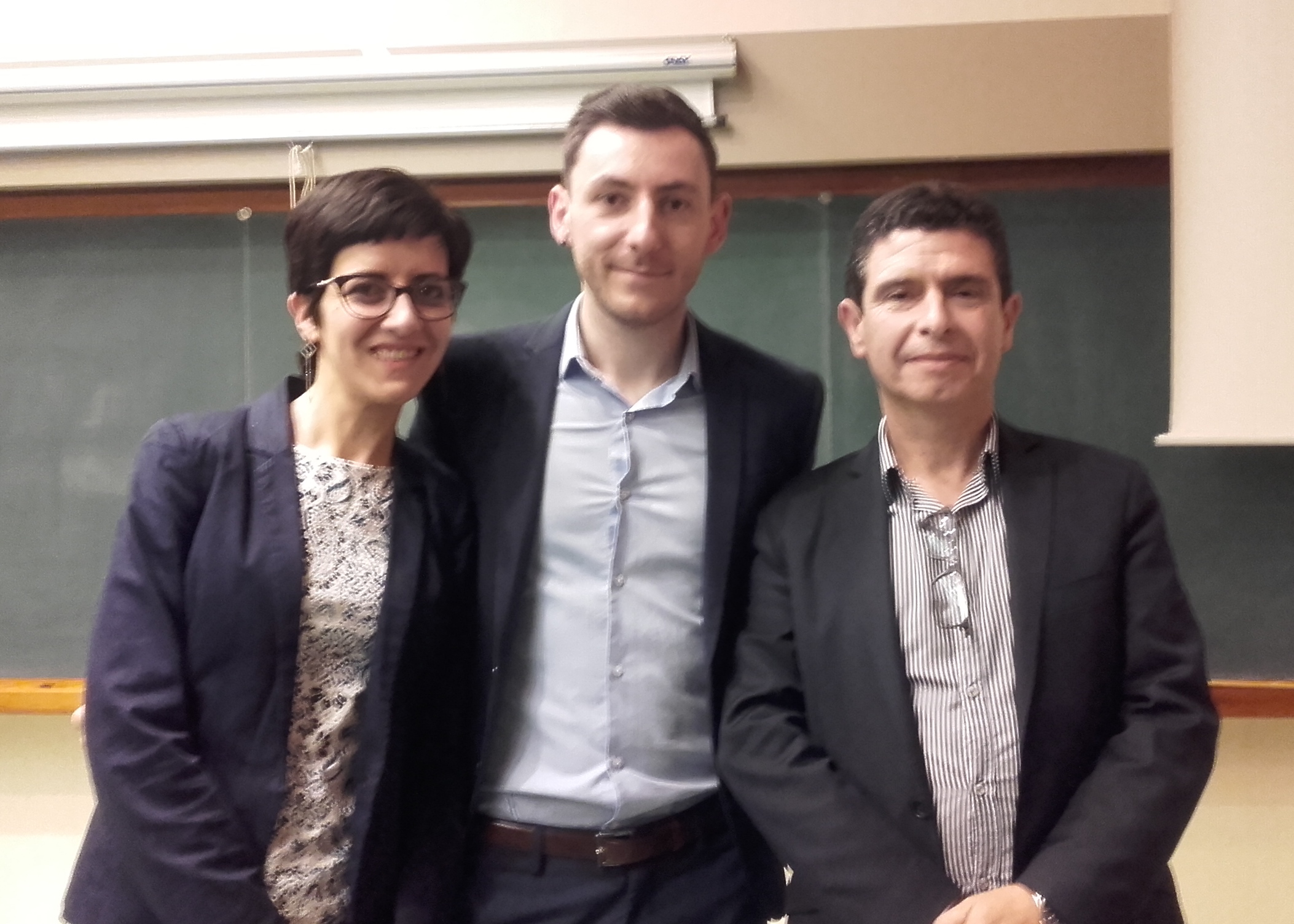 ► La soutenance de thèse de Geoffrey BARRAL « Développement par procédé d'impression jet d'encre de composants électroniques métalliques souples » s'est déroulée le Jeudi 1er février. (Contact: P. Viel). Plus d'infos ici.
► La soutenance de thèse de Geoffrey BARRAL « Développement par procédé d'impression jet d'encre de composants électroniques métalliques souples » s'est déroulée le Jeudi 1er février. (Contact: P. Viel). Plus d'infos ici.
Ce travail a été développé dans la cadre du laboratoire commun GENEA entre le CEA-Licsen et la société Genes'Ink.
voir les ARCHIVES 2017
voir les ARCHIVES 2016
voir les ARCHIVES 2014-2015



